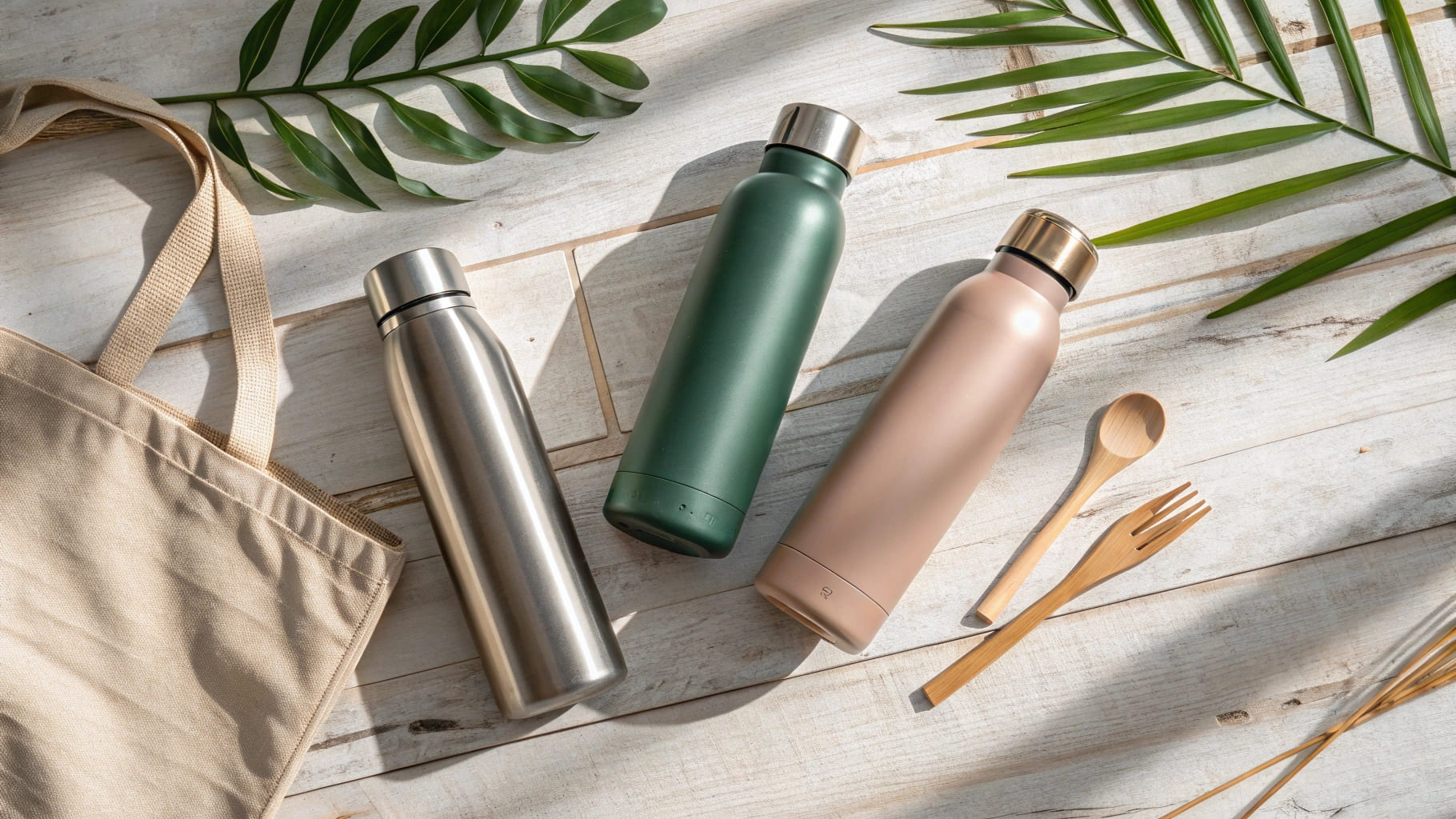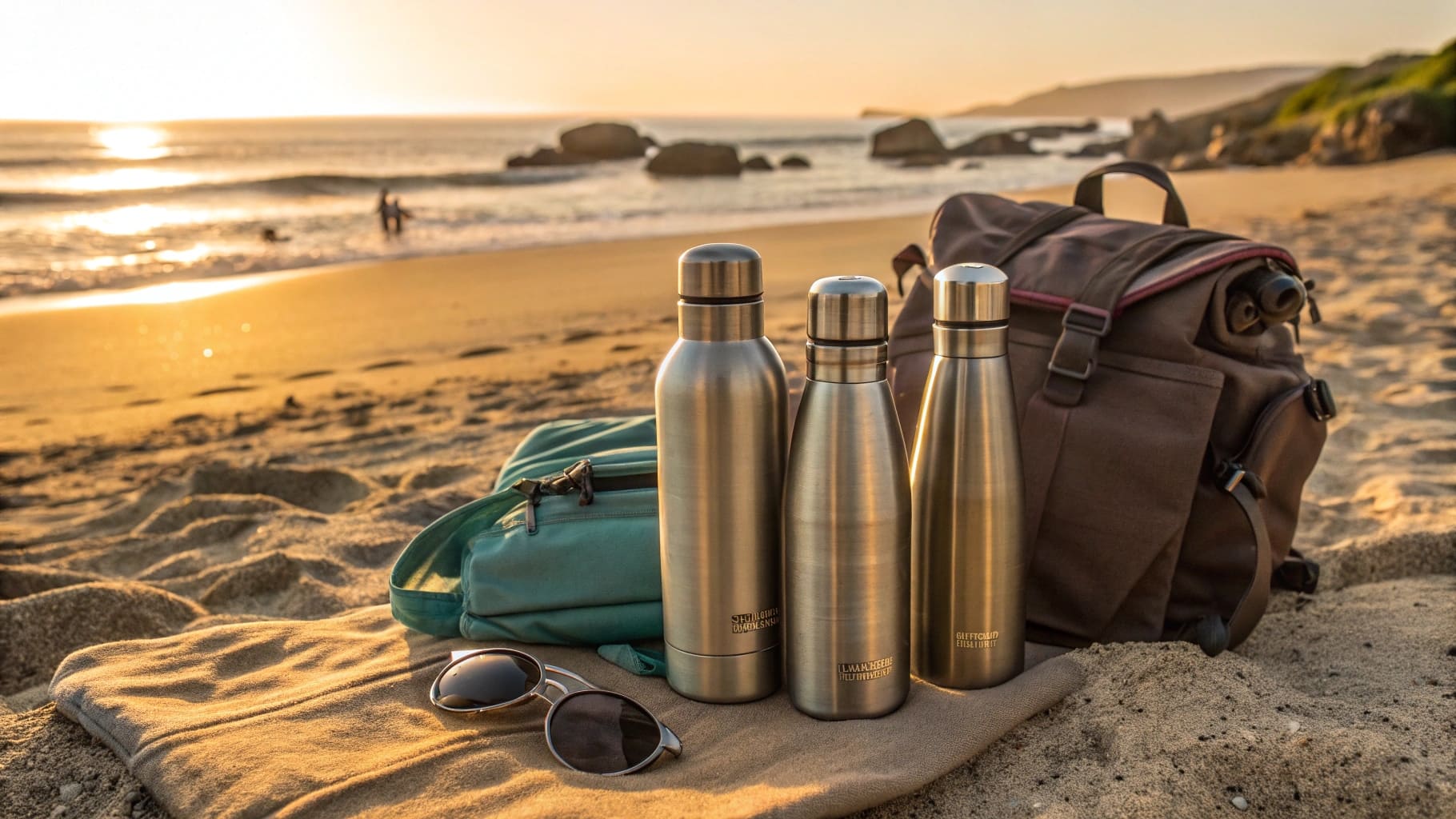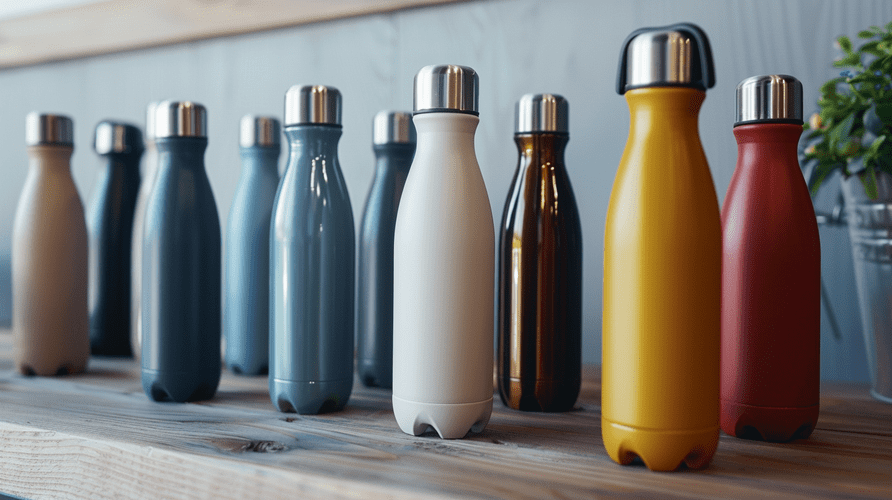Is your reusable bottle looking a bit sad? Grime and mold can be a real problem. I'll show you how to make your bottle sparkle again.
The definitive method involves regular washing with soap and water, using a bottle brush for scrubbing, and ensuring complete drying. For tough mold, a vinegar or baking soda solution works wonders.

Keeping your bottle clean is easier than you think. It's not just about looking good; it's about staying healthy. As a supplier of stainless steel bottles, I know that an easy-to-clean bottle is a happy-customer bottle. So, let's dive into the details to ensure your customers have the best experience, which means they'll keep coming back to you for quality products.
What is the best way to clean a reusable water bottle?
Wondering if you're cleaning your bottle correctly? Many people aren't sure. I will outline a simple, effective method for you to share with your customers.
The best way is daily rinsing and a weekly deep clean. Use hot soapy water and a bottle brush. Pay extra attention to the lid and threads for a thorough clean.

For my B2B clients, like Mark who procures stainless steel water bottles, understanding the best cleaning practices1 is valuable. You can pass this information to your customers. This ensures they are happy with the product long-term. A clean bottle is a frequently used bottle.
Here's a breakdown of an effective cleaning routine:
-
Rinse After Each Use:
- Simply rinse the bottle with warm water. This prevents residues from drying and sticking.
- It's a quick step but makes a big difference.
-
Weekly Deep Clean:
- Use warm water and a few drops of dish soap.
- A good bottle brush is essential. It helps you scrub all interior surfaces. This is especially true for bottles with narrower necks, though I always recommend wide-mouth designs for easier cleaning.
- Don't forget the lid. Disassemble it if possible. Clean all parts, nooks, and threads carefully.
-
Tackling Tough Stains or Odors:
- Vinegar Solution: Fill the bottle halfway with white vinegar, top with water. Let it sit overnight. Rinse thoroughly.
- Baking Soda Paste: Mix baking soda with water to form a paste. Use a bottle brush2 to scrub the interior. Rinse well.
-
Drying is Crucial:
- Always air dry the bottle completely. Leave the lid off.
- Place it upside down on a drying rack. Proper drying is key to preventing mold, which we'll discuss next.
As someone who supplies these items, I emphasize choosing bottles designed for easy cleaning. Features like wide mouths make all these steps much simpler for the end-user. This reflects positively on the product quality you provide
How to prevent mold in reusable water bottles?
Is mold making an unwelcome appearance in your bottles? This is a common, yucky issue. I have some straightforward tips to keep mold away effectively.
Prevent mold by washing your bottle daily and drying it completely after each use. Avoid leaving liquids in it for extended periods, especially sugary drinks. Regular attention is key.

For businesses purchasing bottles in bulk, like Mark's company in Canada, offering a product that inherently resists mold is a huge selling point. Mold is a major pain point for end-users. Let's explore prevention strategies.
Preventing mold is much easier than removing it. Here are my top recommendations:
- Thorough Drying: This is the most important step. Mold thrives in moisture.
- After washing, always air dry the bottle and lid completely.
- A wide-mouth bottle design, which we at Icobottle champion, allows for better air circulation and faster, more thorough drying. This is a feature I always highlight to procurement officers.
- Regular Cleaning: Don't let your bottle sit unwashed.
- Aim for a daily rinse and a more thorough wash every few days, or daily if you use it for anything other than water.
- Don't Store Wet: Never put the lid on a damp bottle for storage.
- Avoid Prolonged Storage of Liquids:
- Try to empty and rinse your bottle daily.
- Sugary drinks, protein shakes, or milk-based beverages can promote mold growth faster if left standing.
- Material Matters:
- Stainless steel, particularly food-grade 304 or 316, is non-porous. This makes it naturally more resistant to mold and bacteria compared to some plastics. This is a key feature of the bottles we supply.
I often discuss these points with clients. If they choose bottles designed with easy cleaning and drying in mind, their customers will face fewer mold issues. This reduces complaints and improves the perception of their brand. A customer who doesn't have to battle mold is a happier customer.
What is the best water bottle to prevent mold?
Want to offer bottles that naturally fight mold? The bottle's material and design are crucial. I'll explain what features make a bottle less prone to mold.
The best water bottles to prevent mold are made from food-grade stainless steel. They should have wide-mouth openings and simple lid designs for easy cleaning and thorough drying.

When I talk to procurement officers like Mark, who is sensitive to quality, I always emphasize that the bottle itself plays a huge role in mold prevention. This isn't just about the end-user's cleaning habits; it's about providing them with a product that's inherently better. This is a core part of my philosophy at Icobottle.
Here’s what to look for from a B2B perspective, drawing from my insights:
- Material Quality is Foundational:
- Food-Grade Stainless Steel: I always recommend 304 (18/8) or 316 stainless steel. Its non-porous surface is naturally resistant to mold and bacteria. Unlike some plastics, it doesn't easily harbor residues. This is a primary advantage we offer.
- Design for Cleanability and Drying: This is where smart procurement choices shine.
- Wide-Mouth Openings: This is critical. A wider mouth allows for:
- Easy access for cleaning tools (brushes).
- Better visual inspection to spot any early signs of grime.
- Crucially, superior air circulation for complete drying. This directly combats mold.
- Simple Lid Mechanisms: Complex lids with many small, fixed parts, or tight crevices are mold traps.
- Look for lids that are easily disassembled for cleaning.
- Simple screw-on caps with removable and cleanable silicone gaskets are often best. Fewer parts mean fewer places for moisture and grime to hide.
- Wide-Mouth Openings: This is critical. A wider mouth allows for:
- Surface Finish:
- An electropolished interior surface is smoother. This makes it harder for residues and microbes to adhere. Cleaning becomes simpler and more effective.
Here's a quick comparison table to highlight these features:
| Feature | Good for Mold Prevention (Recommended) | Poor for Mold Prevention (Avoid) | Why it Matters for Your Business |
|---|---|---|---|
| Material | Food-grade Stainless Steel (304/316) | Some plastics, porous materials | Durability, hygiene, customer perception |
| Mouth Opening | Wide | Narrow | Ease of cleaning, thorough drying, satisfaction |
| Lid Design | Simple, easy to disassemble, removable gaskets | Complex, many fixed parts, hidden crevices | Reduces mold traps, fewer complaints |
| Interior Finish | Smooth, electropolished | Rough, textured | Easier cleaning, better hygiene |
By selecting stainless steel water bottles with these features, B2B buyers like Mark can offer a product that isn't just functional and stylish. It actively helps end-users maintain hygiene with less effort. This translates directly to fewer customer complaints about mold. It also builds a stronger perception of quality and thoughtful design for your brand. Highlighting these "easy-to-clean" and "mold-resistant by design" features is a powerful differentiator in our competitive market. I've seen this make a real difference for my clients.
Conclusion
In summary, keeping bottles clean and mold-free is about regular washing, thorough drying, and choosing well-designed stainless steel bottles. This ensures customer satisfaction and protects your brand.

